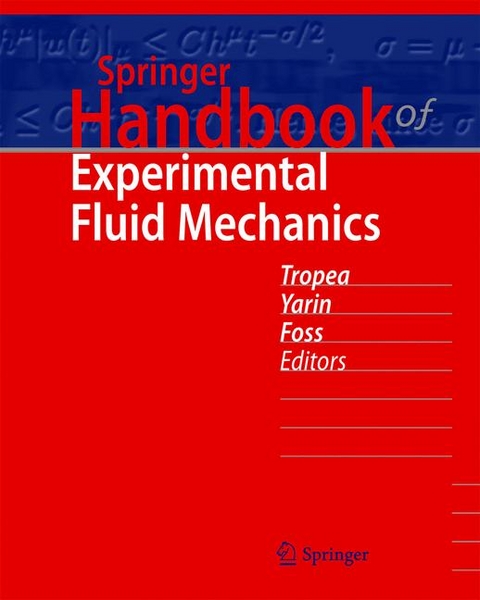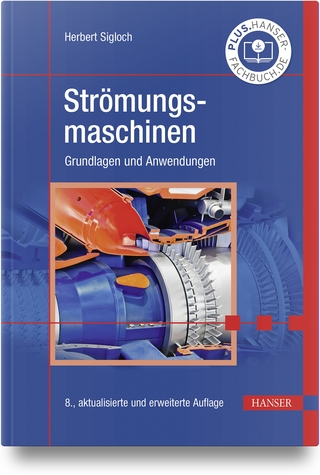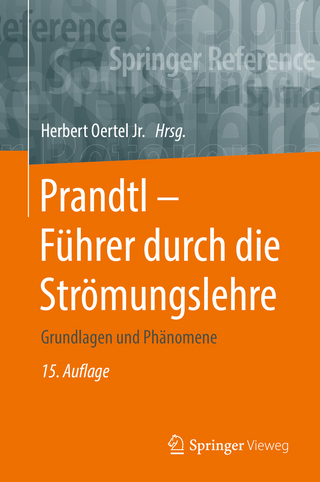
Springer Handbook of Experimental Fluid Mechanics
Springer Berlin (Verlag)
978-3-662-58549-8 (ISBN)
- Titel wird leider nicht erscheinen
- Artikel merken
This key text is a major reference work - a totally authoritative handbook on a major current topic. It consolidates state-of-the-art information from the large number of disciplines used in Experimental Fluid Mechanics into a readable desk reference book. It comprises four parts: Experiments in Fluid Mechanics, Measurement of Primary Quantities, Specific Experimental Approaches, and Analyses and Post-Processing of Data. The book has been prepared for physicists and engineers in research and development in universities, in industry and in other research institutions. Both experimental methodology and techniques are covered fundamentally and for a wide range of application fields. A generous use of citations directs the reader to additional material on each subject.
lt;br />C. Tropea: Professor Tropea studied and worked in Toronto, Karlsruhe and Erlangen before taking the Chair of Fluid Mechanics and Aerodynamics at the Technical University of Darmstadt in 1997. His background is in experimental fluid mechanics and he has authored numerous book sections and journal publications on this subject. He is currently Editor of Experiments in Fluids from Springer-Verlag and was previously Editor-in-Chief of Measurement Science and Technology from IOP Publishing.
J. F. Foss
Professor Foss received his BSME (1961), MSME (1962) and Ph.D. (1965) from Purdue University. He has been on the faculty at Michigan State University since 9/1964. He served as the NSF Program Director for Fluid Dynamics and Hydraulics (1998-2000). His research specialty is vorticity measurements. His research group addresses fundamental and applied problems in turbulent flows. The latter are primarily associated with automotive applications. He is a Fellow of ASME and the A.V. Humboldt Stiftung and a Chartered Physicist of the IOP. He holds 7 patents involving fluid mechanics.
A. Yarin:
Alexander Yarin is currently a Professor at the Department of Mechanical and Industrial Engineering at the University of Illinois at Chicago, USA. In 1990-2005 he was a Professor at the Faculty of Mechanical Engineering at the Technion-Israel Institute of Technology. Professor Yarin is an applied physicist working in the field of fluid mechanics. He received his PhD and Habilitation degrees from the Institute for Problems in Mechanics, USSR Academy of Sciences, Moscow. His main contributions are related to the free surface flows (jets, films, fibers, threads and droplets) of Newtonian and rheologically complex liquids. He is an author of 2 monographs, 5 chapters in books and 170 research articles.
Introduction
The expression: "analytical work", often connotes an effort in which basic expressions are combined to analyze a given problem and to derive new information and insight from the resulting mathematical steps of the analysis. Specifically, having started with the appropriate relationships and bringing appropriate mathematical manipulations to the task, the analyst is able to create new information to address the motivating question(s).
A central organizing theme of this handbook is that 'experimental fluid mechanics" can be understood as a parallel activity to that described above. The motivating questions will set the context for the experiment. The experiment will be established as a boundary value problem in which the experimentalist will address all aspects of the boundary conditions that will influence the "solution." If a transient or an evolving solution is sought, the appropriate initial conditions will similarly be addressed.
Having established these conditions, the solution to the boundary value problem will be revealed in the experimental data that will - ideally - not be contaminated by unintended or unknown perturbing effects and that will be fully converged if statistical average values are sought.
Part A Experiments in Fluid Mechanics
The objective of Part A is to establish the fundamental concepts and equations that undergird experimental fluid mechanics. The first chapter: addresses both the governing equations and the constitutive equations for Newtonian and non-Newtonian fluids. Chapter 2 provides the systematic bases for model testing and the scaling of experimental results. Sections 2.1 through 2.7 derive similitude parameters (Reynolds number, Froude number, etc.) from the governing equations and the boundary conditions. Dimensional analysis (Sect. 2.2) provides a rational approach for the organization and interpretation of experimental data; Sect. 2.3, self-similarity, documents known flow fields that exhibit this condition and it provides guidance on what other flows may exhibit this behavior. The encyclopedic presentation of examples will allow the reader to comprehend the universal features of both complete and incomplete self-similarity.
Chap. 1 The Experiment as a Boundary-Value Problem
Chap. 2 Nondimensional Representation of the Boundary-Value Problem
Part B Measurement of Primary Quantities
The objective of Part B is to provide specific information to the reader on the following primary quantities: material properties (Chap. 3), flow field properties (Chap. 4 - pressure, Chap. 5 - velocity, vorticity, Mach number, Chap. 6 - spatial density variations and Chap. 7 - temperature and heat flux) and forces and moments (Chap. 8). Chapter 3 is focused on providing quantitative information for the material properties, the sources of this information and the associated confidence levels for the given data. Chapters 4 through 8 provide comprehensive guidance to the reader on: i) the objectives, ii) the available equipment, iii) the utilization techniques, and iv) the post-processing of the primitive information for the stated quantities.
Chap. 3 Material Properties: Measurement and Data
Chap. 4 Pressure Measurement Systems
Chap. 5 Velocity, Vorticity and Mach Number
Chap. 6 Spatial Density Variations
Chap. 7 Temperature, Concentration and Heat Flux
Chap. 8 Forces and Moments
Part C Specific Experimental Approaches
Building on the previous two parts of this Springer Handbook, which have dealt with the fundamental concepts and equations that undergrid experimental fluid mechanics and the measurement of primary quantities, respectively, Part C addresses experimental fluid mechanics from an application point of view. According to application, often unique and specific forms of equipment, experimental procedure, or analysis and interpretation of results have been developed. It is the purpose of Part C to elucidate a selection of such application areas, in particular
| Erscheinungsdatum | 20.12.2018 |
|---|---|
| Reihe/Serie | Springer Handbook of Experimental Fluid Mechanics | Springer Handbooks |
| Zusatzinfo | XXVIII, 1557 p. |
| Verlagsort | Berlin |
| Sprache | englisch |
| Maße | 191 x 235 mm |
| Themenwelt | Naturwissenschaften ► Physik / Astronomie ► Strömungsmechanik |
| Naturwissenschaften ► Physik / Astronomie ► Thermodynamik | |
| Technik ► Maschinenbau | |
| Schlagworte | aerodynamics • Flow visualization • fluid mechanics • Hydrolics • Non-Newtonian Flows |
| ISBN-10 | 3-662-58549-9 / 3662585499 |
| ISBN-13 | 978-3-662-58549-8 / 9783662585498 |
| Zustand | Neuware |
| Haben Sie eine Frage zum Produkt? |
aus dem Bereich


